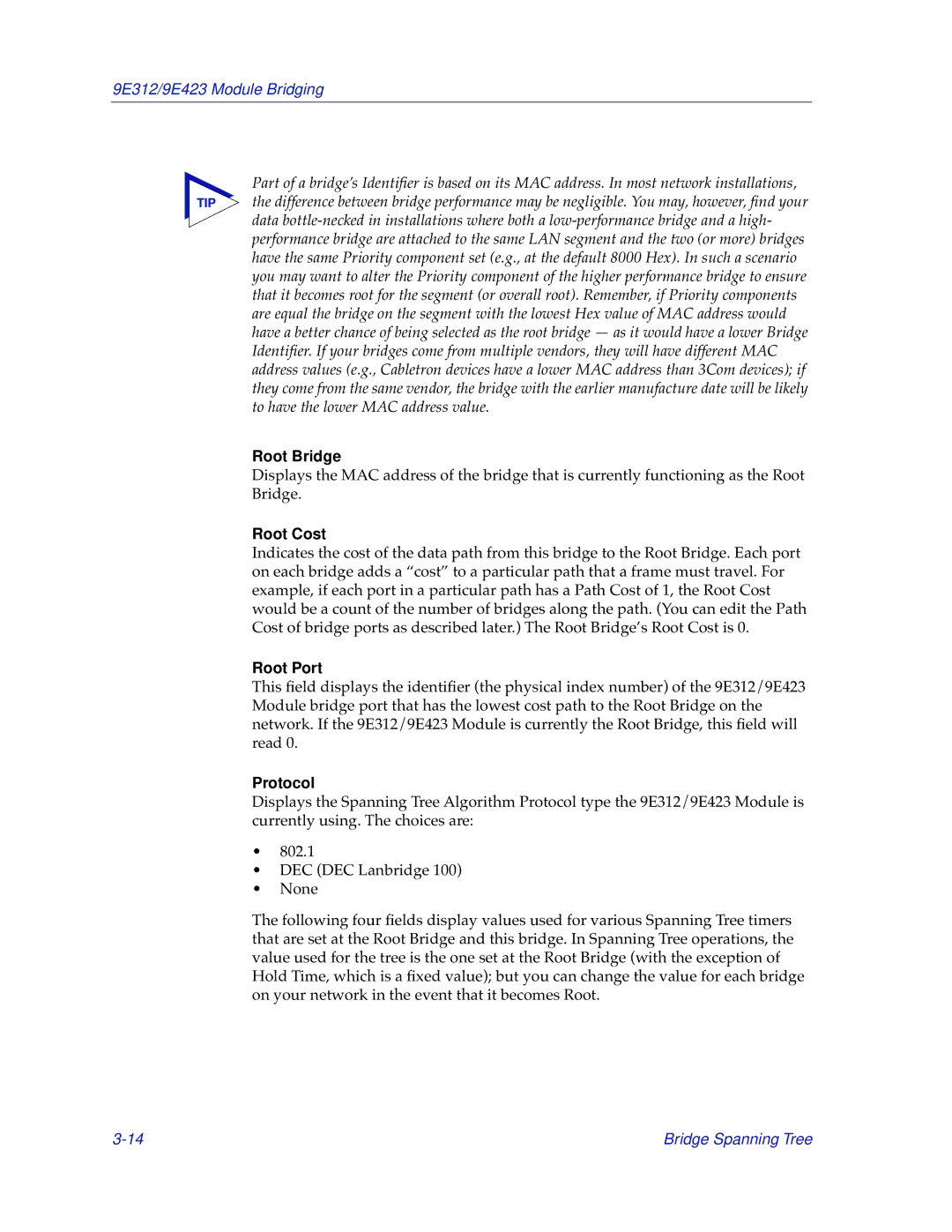
9E312/9E423 Module Bridging
Part of a bridge’s Identifier is based on its MAC address. In most network installations,
TIP the difference between bridge performance may be negligible. You may, however, find your data
Root Bridge
Displays the MAC address of the bridge that is currently functioning as the Root Bridge.
Root Cost
Indicates the cost of the data path from this bridge to the Root Bridge. Each port on each bridge adds a “cost” to a particular path that a frame must travel. For example, if each port in a particular path has a Path Cost of 1, the Root Cost would be a count of the number of bridges along the path. (You can edit the Path Cost of bridge ports as described later.) The Root Bridge’s Root Cost is 0.
Root Port
This field displays the identifier (the physical index number) of the 9E312/9E423 Module bridge port that has the lowest cost path to the Root Bridge on the network. If the 9E312/9E423 Module is currently the Root Bridge, this field will read 0.
Protocol
Displays the Spanning Tree Algorithm Protocol type the 9E312/9E423 Module is currently using. The choices are:
•802.1
•DEC (DEC Lanbridge 100)
•None
The following four fields display values used for various Spanning Tree timers that are set at the Root Bridge and this bridge. In Spanning Tree operations, the value used for the tree is the one set at the Root Bridge (with the exception of Hold Time, which is a fixed value); but you can change the value for each bridge on your network in the event that it becomes Root.
Bridge Spanning Tree |
